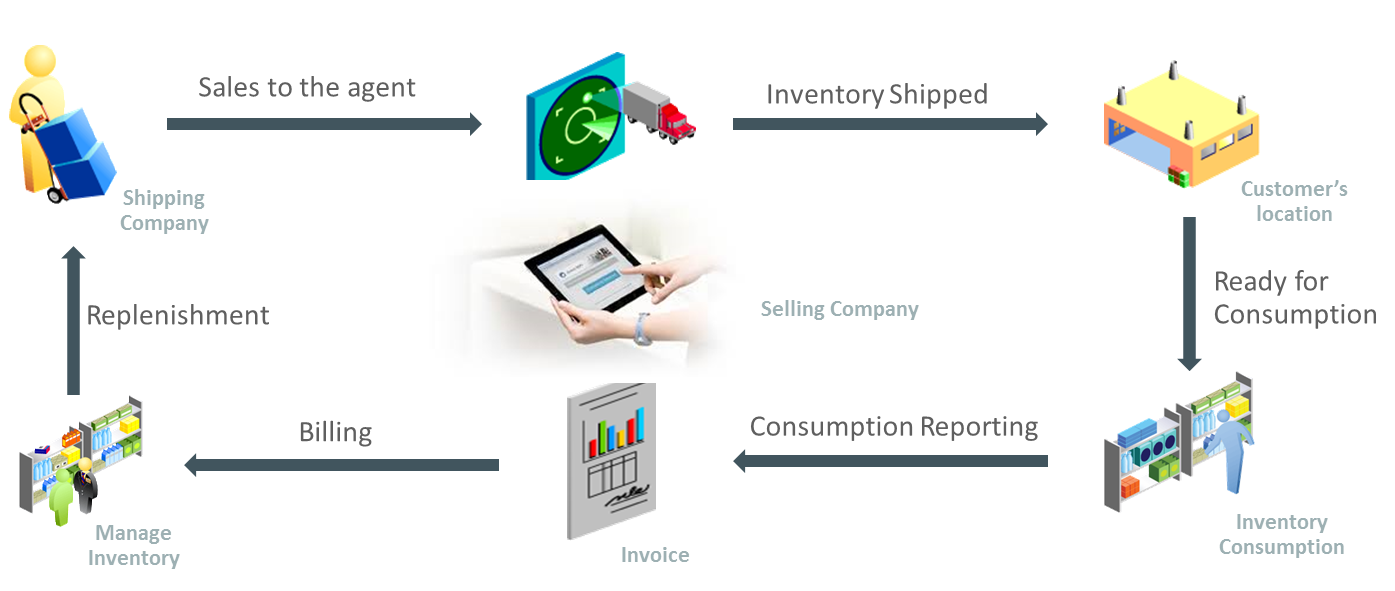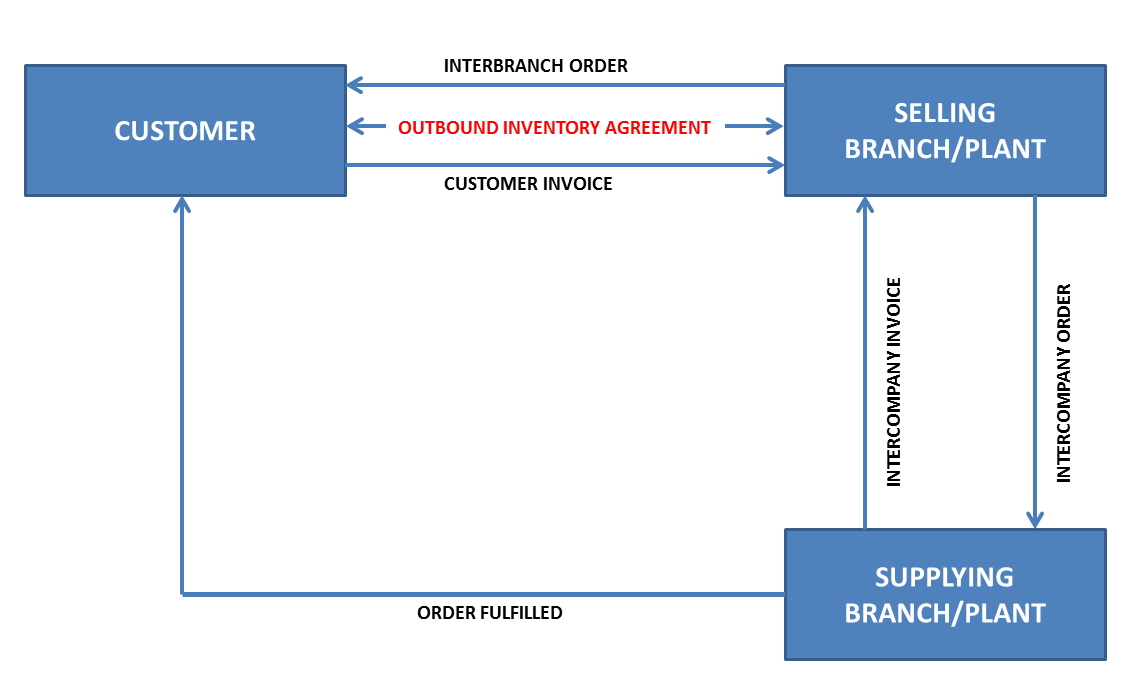Understanding Outbound Inventory Interbranch and Intercompany Orders
You use interbranch orders to complete orders for customers from a branch/plant other than the selling branch/plant. Outbound inventory interbranch orders are helpful if your company sells from one location but ships orders from another location, such as a central supply warehouse.
An outbound inventory intercompany order is an order that tracks the transactions between the supplying and selling branch/plant. While the interbranch order is the sales order to the customer, the intercompany order is the purchase order to the supplying branch/plant.
The following graphic illustrates the business process flow of an outbound inventory intercompany order.

For internally owned shipment orders, when inventory is received at the customer's location, the ownership is transferred to the supplier using JD Edwards EnterpriseOne. For customer owned VMI orders, the ownership of the inventory is transferred to the end customer. The difference between a direct ship order and an intercompany order is that the supplier is the supplying warehouse, the sold to address is the selling branch/plant, and the ship to address is the customer number. Additionally, the intercompany order is not created until shipment confirmation.
This diagram illustrates the difference between an interbranch order and an intercompany order:

The system processes interbranch orders based on the document type and line type combination that you set up for interbranch orders. For intercompany orders that the system creates during shipment confirmation, the system uses the last status as 914 (Added in Shipment Confirmation). You can edit order activity rules to continue order processing for outbound inventory interbranch and intercompany orders.
You can set up a line type for outbound inventory interbranch orders as a non-inventory item by selecting Edit Item Master for Non-Stock. With these line-type features, you can verify the item number in the F4102 table and the cost and price information in the F4105 and F4106 tables, and write transactions to a general ledger offset account for a line type that is unique to intercompany orders. As with a direct ship order, the system does not create commitments or perform availability checks at the selling branch/plant.